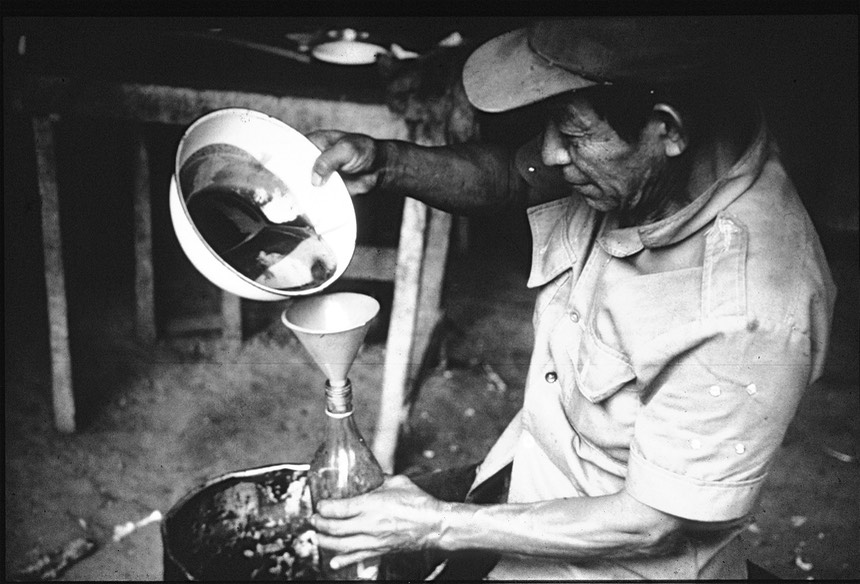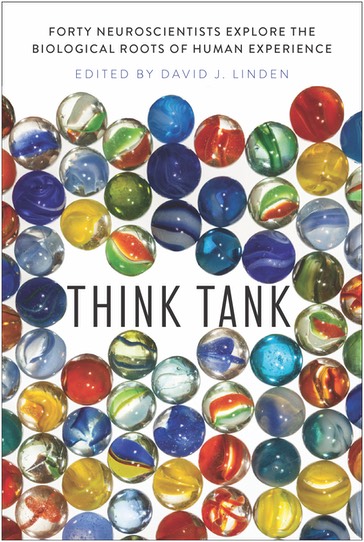Iquitos, Peru, 1932.
Emilo Andrade Gomez was born in the Peruvian Amazon, the son of a white father and an Amerindian mother. In 1932, at the age of fourteen, he was given the herbal hallucinogenic drink called ayahuasca by local shamans in order to recover his strength following a period of illness. He saw visions that the shamans explained were revelations that he was chosen by the plants in the ayahuasca brew to receive knowledge from them. He was to learn traditional medicine and become a shaman himself. This was an elaborate and extended process that required him to live in near isolation in the jungle for a period of three years. During this time he was provided a strict traditional diet, consisting mostly of plantains and fish. He could eat some jungle fowl, but only the left breast—no other portion of the meat was allowed. Alcohol and sexual contact were strictly prohibited. His food was prepared and delivered to him by either a young girl or a postmenopausal woman, and whatever portion remained uneaten was carefully collected and destroyed so that no other man or animal might consume it.

Don Emilio preparing ayahuasca. Photo by Dr. Luis Eduardo Luna. Used with permission.
During the period of this ritual diet, Don Emilio wandered in the jungle to study plants and about every two weeks he would prepare and drink ayahuasca. The substance revealed to him a supernatural world, filled with spirits of both malign and benevolent character. The malign spirits were those of evil shamans who sought to pierce his body with magical darts that would sap his strength or even kill him. The benevolent spirits were sometimes those of good shamans, but more commonly were the spirits of jungle plants. In his ayahuasca dreams of those years, Don Emilio learned about sixty different songs from the plant spirits. When the initiation period was complete, he began his own practice of medicine, under the tutelage of an elder shaman. He used the icaros, the magic songs taught by the plants, to reinforce the effectiveness of his own herbal preparations and thereby help others to cure particular diseases, attract game or fish, repel the attack of evil shamans, or win the love of another.
It is not known when or exactly where the ritual use of ayahuasca began, but it is likely to have been hundreds of years before European colonization. Ayahuasca first became known to Europeans following the 1851 Amazon expedition of the English botanist Richard Spruce, who observed it being consumed by the Tukano people living on the Rio Uapes in Brazil. Since then, ayahuasca use has been found to be widespread among Amerindian groups in the upper Amazon basin, with practitioners in present-day Peru, Ecuador, Brazil, and Colombia.
The recipe for ayahuasca varies across different groups, but the most common preparation is as follows: A shaman gathers a particular type of liana vine (Banisteriopus caapi) and prepares about thirty pieces of the crushed stem, each about a foot long, in about four gallons of water. To this are added about two hundred leaves of the chacruna bush (Psychotria viridis), following which the woody, leafy stew is boiled slowly for about twelve hours, until the volume of the liquid is reduced to about a quart and has become an oily, gritty brown syrup. This is sufficient for about twelve foul-smelling doses. About a half hour after swallowing the brew, hallucinations begin, and typically last for three to six hours. These are primarily visual, sometimes auditory, and frequently terrifying. For most, it’s a rather inward-turning, paranoiac, fearful experience, but one that can yield insight and self-knowledge. Ayahuasca drinking is almost always accompanied by vomiting, and examination of the vomit is said to yield clues as to the efficacy and nature of the treatment.
While plant-based psychoactive drugs are common throughout the world, ayahuasca is unusual in that its action specifically requires the activity of two different classes of compound from two different species of plant. The hallucinations are the result of the dimethyltryptamine (DMT) in the chacruna leaves. DMT is a molecule with a chemical structure similar to that of the well-known synthetic hallucinogen LSD. However, unlike LSD, DMT taken by mouth is completely broken down in the digestive tract by the enzyme monoamine oxidase, and so none reaches the brain to produce its psychoactive effects. The liana contains a group of related beta-carboline compounds, one of which is called harmaline. Harmaline and its relatives are potent monoamine oxidase inhibitors. When taken alone at the doses typically found in ayahuasca preparations, harmaline does not lead to hallucinations. (It does, however, produce a strong tremor and discoordination of movement.) But when liana and chacruna extracts are swallowed together, as in ayahuasca, the harmaline blocks the action of monoamine oxidase in the gut, allowing the DMT from the chacruna to escape breakdown and reach the brain. This is an interesting finding, because it suggests that the Amerindian discoverers of the ayahuasca preparation were unlikely to have simply stumbled upon the properties of the mixture during food preparation. It’s more likely that ancient traditional healers of the Amazon basin had made a systematic study of the effects of specific combinations of plant extracts.
Footnotes: Ayahuasca is a word in the Quechua language that has been used to describe this preparation. Quechua is not the original language of any of the peoples of the Amazon basin, who have a number of different names for the drink, including caapi, yagé, pildé, and others.
This account of Don Emilio Andrade Gomez is adapted from two papers by Dr. Luis Eduardo Luna: Luna LE. The healing practices of an Amerindian Shaman. Journal of Ethnopharmacology 11, 123–133 (1984); Luna LE. The concept as plants as teachers among four mestizo shamans of Iquitos, northeastern Peru. Journal of Ethnopharmacology 11, 135–156 (1984).



